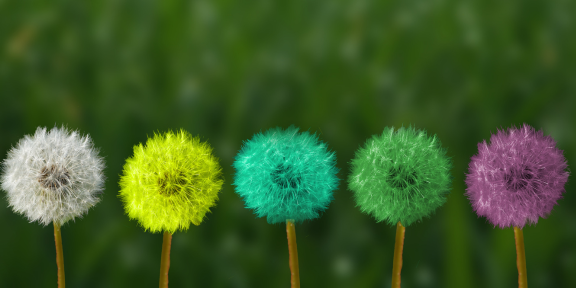Welcome to the world of mindfulness practices – a transformative journey that leads to tranquility, clarity, and inner peace.
As individuals, we constantly encounter the challenges of modern-day life, making it essential for us to practice mindfulness. The practice of mindfulness allows us to create a sense of awareness, leading to a greater understanding of self, surroundings, and the universe.
Mindfulness practices are becoming increasingly popular, and for a good reason. Incorporating mindfulness practices into our daily routines can have a profound and positive impact on our lives. From reducing stress levels to promoting a healthy emotional state, mindfulness practices are the go-to solution for anyone seeking holistic well-being.
If you’re looking to embrace mindfulness practices, this article is for you. We will guide you through the techniques and exercises involved in mindfulness, provide step-by-step guidance on mindfulness meditation and an insight into its benefits.
So, let’s begin our journey towards serenity!
Understanding Mindfulness: Techniques and Exercises
Mindfulness is a practice that requires attention and intention. It involves focusing on the present moment, without judgment. This can be achieved through various techniques and exercises that help us cultivate a greater sense of awareness and clarity.
Techniques
There are several mindfulness techniques that can be incorporated into daily life:
| Technique | Description |
|---|---|
| Body Scan | Mentally scan your body from head to toe, noticing any sensations without judgment. |
| Breathing | Focus on your breath, noticing the sensations as you inhale and exhale. |
| Walking Meditation | Pay attention to the sensations in your feet as you walk, noticing each step. |
By practicing these techniques regularly, we can develop a greater sense of mindfulness and self-awareness.
Exercises
There are also various exercises that can be used to cultivate mindfulness:
- Gratitude Practice: Write down three things you are grateful for each day.
- Body Awareness: Spend five minutes each day noticing the sensations in your body without judgment.
- Visualization: Use your imagination to visualize a peaceful scene, such as a beach or a forest.
These exercises can help us become more present and aware in our daily lives, cultivating a sense of inner peace and tranquility.

Embarking on the Journey: Mindfulness Meditation
Mindfulness meditation is an essential aspect of mindfulness practices. It allows us to focus on the present moment, bringing our awareness to the sensations in our body and the thoughts in our mind. Through this practice, we can cultivate a sense of inner calm and clarity.
What is Mindfulness Meditation?
Mindfulness meditation involves paying attention to the present moment in a non-judgmental way. It is about being aware of the thoughts and sensations in our body without getting lost in them or reacting to them. When we practice mindfulness meditation, we learn to observe our thoughts and feelings from a distance, without getting caught up in them.
| Key benefits of mindfulness meditation |
|---|
| Reduced stress and anxiety |
| Improved focus and concentration |
| Enhanced emotional well-being |
How to Practice Mindfulness Meditation
To begin a mindfulness meditation practice, find a quiet place where you won’t be disturbed. Set a timer for 5-10 minutes, or longer if desired. Sit in a comfortable position with your back straight and your feet flat on the ground.
Close your eyes or lower your gaze, and take a few deep breaths. Focus on the sensation of your breath as it enters and leaves your body. If your mind wanders, gently bring your attention back to your breath.
As you continue to breathe, scan your body for any sensations or discomfort. Notice them without judgment, and allow them to pass. If your mind becomes distracted, gently return your focus to your breath.
When your timer goes off, gently open your eyes or lift your gaze. Take a moment to notice how you feel.
Practice Makes Perfect
Like any skill, mindfulness meditation takes practice. Even experienced practitioners may find their mind wandering during meditation sessions. This is normal and expected. Instead of getting frustrated, simply acknowledge the distraction and gently bring your attention back to your breath.
With regular practice, mindfulness meditation can become a habit that brings calm and clarity to your daily life.

The Power of Mindfulness: Benefits for Stress Relief
Mindfulness practices have been proven to have a profound impact on stress relief. By incorporating mindfulness into your daily routine, you can experience a greater sense of calm and well-being.
One of the key benefits of mindfulness for stress relief is its ability to reduce anxiety levels. When we practice mindfulness, we learn to focus on the present moment and let go of worries about the past or future. This can be particularly helpful for individuals who struggle with generalized anxiety disorder or other anxiety-related conditions.
Additionally, mindfulness practices can help us manage negative thought patterns and emotions. By learning to observe our thoughts without judgment, we can develop a greater sense of self-awareness and control over our mental state. This can lead to increased resilience and more positive coping mechanisms when faced with stressors.
The Benefits of Mindfulness for Stress Relief:
| Benefit | Description |
|---|---|
| Reduces anxiety | Develops the ability to focus on the present moment and let go of worries about the past or future |
| Manages negative thought patterns | Observing thoughts without judgment leads to greater self-awareness and control over mental state |
| Promotes resilience | Increased ability to cope with stressors and negative emotions |
To experience the benefits of mindfulness for stress relief, try incorporating mindfulness practices into your daily routine. This could mean taking a few moments each day to sit in silence and focus on your breath or practicing mindful movement through yoga or tai chi. Experiment with different techniques to find what works best for you.
Remember, mindfulness is a practice – it takes time and patience to develop. With consistent effort and dedication, however, you can unlock the power of mindfulness and experience greater tranquility, clarity, and inner peace in your life.

Mindfulness for Beginners: Starting Your Journey
Embarking on a journey of mindfulness can seem daunting, especially for beginners. However, with the right guidance and resources, starting your mindfulness practice can be a transformative and empowering experience.
The Benefits of Mindfulness for Beginners
Practicing mindfulness has been shown to reduce stress, improve focus and concentration, and promote emotional well-being. As a beginner, mindfulness can help you develop a greater sense of inner peace and clarity, and a deeper connection to the present moment.
Tips for Mindfulness Beginners
Starting your mindfulness journey is easier than you may think. Here are some tips to get started:
- Start small: Begin by practicing mindfulness for just a few minutes each day and gradually increase the time as you become more comfortable.
- Find a quiet space: Choose a quiet, peaceful space where you can focus your mind without distractions.
- Notice your breath: Pay attention to your breath as it moves in and out of your body, focusing on the sensation of each inhale and exhale.
- Be patient: Mindfulness is a journey, and it takes time to develop a regular practice. Be patient with yourself and enjoy the process.
Mindfulness Resources for Beginners
There are many resources available to support your mindfulness practice as a beginner. Here are a few to consider:
- Apps: Apps like Headspace, Calm, and Insight Timer offer guided meditations and mindfulness exercises.
- Books: “The Power of Now” by Eckhart Tolle and “Mindfulness: An Eight-Week Plan for Finding Peace in a Frantic World” by Mark Williams and Danny Penman are popular options.
- Online Communities: Websites like Mindful.org and Mindbodygreen.com provide articles, resources, and support for mindfulness practitioners.
Remember, starting your mindfulness journey is a personal choice and a unique experience. Take the time to find what works best for you and enjoy the process. Soon, you’ll discover the transformative power of mindfulness and its ability to unlock a sense of serenity and inner peace in your life.

Cultivating Mental Health: Mindfulness for Emotional Well-being
Mindfulness practices have been shown to have a positive impact on mental health and emotional well-being. By developing a regular mindfulness practice, individuals can reduce negative thought patterns and increase resilience.
One of the key benefits of mindfulness for emotional well-being is its ability to help individuals regulate their emotions. By practicing mindfulness, individuals can learn to observe their emotions without judgment, allowing them to experience them fully without being overwhelmed.
| Benefits of Mindfulness for Emotional Well-being: |
|---|
| – Increased emotional regulation |
| – Reduction in negative thought patterns |
| – Increased resilience |
Incorporating mindfulness practices into daily life can be especially beneficial for those dealing with stress, anxiety, or depression. In fact, research has shown that mindfulness-based interventions can be just as effective as traditional forms of therapy for these conditions.
“Mindfulness can help us to see clearly what is happening in the present moment, rather than being caught up in the stories our minds create about what is happening. This can be very helpful when we are dealing with difficult emotions, as it allows us to experience them without being overwhelmed.”
To cultivate mindfulness for emotional well-being, individuals can practice techniques such as body scans, seated meditation, and mindful breathing. It’s important to develop a regular practice, even if it’s just a few minutes a day, to experience the full benefits of mindfulness.
- Try a guided meditation app, such as Headspace or Insight Timer.
- Incorporate mindfulness into your daily routine by practicing mindfulness while doing activities such as washing dishes or taking a shower.
- Join a mindfulness-based group therapy program to deepen your practice and connect with others.
By incorporating mindfulness practices into daily life, individuals can cultivate emotional well-being and resilience, reducing the impact of negative emotions and enhancing overall quality of life.

Boosting Productivity: Mindfulness in the Workplace
Are you tired of feeling overwhelmed at work? Do you struggle to stay focused and productive amidst the chaos of everyday demands? Mindfulness practices can help you cultivate a clear and calm mind, making you more productive and efficient in the workplace.
By incorporating mindfulness into your work routine, you can improve your ability to concentrate, stay present in the moment, and effectively manage your time. Mindfulness can also boost your creativity and problem-solving skills, enabling you to approach challenges with a clear and open mind.
| Mindful Techniques for the Workplace: | How it helps: |
|---|---|
| Deep Breathing | Slows down racing thoughts and promotes focus |
| Body Scan Meditation | Helps release physical tension and stay present in the moment |
| Walking Meditation | Allows for movement and mindfulness practice simultaneously |
It’s important to establish a consistent mindfulness practice to reap the benefits in the workplace. This can include taking short mindful breaks throughout the day, practicing mindfulness during your commute, or incorporating mindfulness techniques into meetings and projects.
By embracing mindfulness in the workplace, you can enhance your productivity and overall job satisfaction. Give it a try and see how it can positively impact your workday.

Mindfulness for Anxiety: Finding Calm Amidst the Chaos
Anxiety can be a challenging and overwhelming experience, but mindfulness practices offer a powerful tool for finding calm amidst the chaos. By cultivating mindful awareness, we can learn to observe our anxious thoughts and feelings without judgment or reactivity, allowing us to respond to them in a more grounded and centered way.
Techniques for Mindful Anxiety Relief
There are many mindfulness techniques that can be particularly helpful for managing anxiety. These include:
- Breathing exercises: Focus on slow, deep breathing, inhaling for a count of four, holding for a count of four, exhaling for a count of six. Repeat for a few minutes.
- Body scans: Scan your body from head to toe, noticing any areas of tension or discomfort without judgment. Breathe deeply into each area, allowing it to release and relax.
- Sensory awareness: Focus on your senses, paying attention to what you see, hear, smell, taste, and touch in the present moment. Allow yourself to fully immerse in these sensations, bringing your attention back whenever your mind wanders.
By incorporating these techniques into your daily routine, you can gradually decrease the intensity and frequency of anxious thoughts and feelings.
The Benefits of Mindfulness for Anxiety Relief
Research has shown that mindfulness practices can be highly effective in reducing anxiety and promoting emotional well-being. By cultivating present moment awareness, we can break free from the cycle of anxious thoughts and feelings, and learn to respond to challenging situations in a more skillful and adaptive way.
Mindfulness also helps to regulate the body’s stress response system, reducing the impact of stress hormones on the body and promoting physical and emotional resilience.
Overall, mindfulness offers a powerful tool for managing anxiety and cultivating greater calm, clarity, and peace of mind.

“Mindfulness is a way of befriending ourselves and our experience.” – Jon Kabat-Zinn
Conclusion: Embrace Mindfulness, Embrace Life
As we come to the end of this journey exploring mindfulness practices, we hope you feel inspired to embrace this transformative practice in your life. Mindfulness has the power to unlock a sense of tranquility, clarity, and inner peace amidst the chaos of everyday life.
By understanding the techniques and exercises involved in mindfulness, you can cultivate a deeper awareness of your thoughts, emotions, and physical sensations, leading to a greater sense of well-being.
Whether you’re new to mindfulness or a seasoned practitioner, there are many resources and support available to help you on your journey. From apps and books to online communities, you can find a wealth of information to help you incorporate mindfulness into your daily life.
So, take a deep breath and embrace mindfulness. Allow it to guide you on a journey towards a more fulfilling and meaningful life. Remember, the power to transform your life lies within you.
Frequently Asked Questions about Mindfulness Practices
As you embark on your mindfulness journey, you may have questions or concerns about this transformative practice. Here are some frequently asked questions to provide clarity and guidance:
What is mindfulness?
Mindfulness is the practice of being present and fully engaged in the current moment, without judgment or distraction from thoughts, emotions, or external stimuli.
Do I need to be a Buddhist or religious to practice mindfulness?
No, mindfulness is a secular practice and can be practiced by anyone, regardless of their religious beliefs or affiliations.
How do I know if I am practicing mindfulness correctly?
There is no right or wrong way to practice mindfulness. The key is to approach it with an open mind and a willingness to be present in the moment.
I find it difficult to focus during mindfulness meditation. What can I do?
It is common to experience difficulty focusing during mindfulness meditation. Begin with short sessions, gradually increasing the length of time as you become more comfortable. You may also find it helpful to try different meditation techniques or exercises to find what works best for you.
Can mindfulness help with depression?
Yes, mindfulness has been shown to be effective in reducing symptoms of depression and improving overall well-being. However, it is important to seek professional help if you are experiencing severe or persistent symptoms of depression.
How long does it take to experience the benefits of mindfulness?
The benefits of mindfulness can be experienced immediately, such as feeling more calm and centered after a mindfulness meditation practice. However, the full benefits of mindfulness may require consistent practice over time.
Is it possible to practice mindfulness while doing everyday activities?
Yes, mindfulness can be practiced during everyday activities, such as walking, eating, or even washing dishes. The key is to approach these activities with a mindful awareness and presence in the moment.
Can mindfulness be practiced in a group or with a teacher?
Yes, practicing mindfulness in a group or with a teacher can be beneficial for accountability, motivation, and guidance. There are many mindfulness classes and workshops available, as well as online resources for virtual group practice.
Further Resources and Support for Mindfulness Practices
Embarking on a mindfulness journey can be overwhelming, but you don’t have to go it alone. Here are some resources and support to help you along the way:
Books:
There are many books on mindfulness practices, but some of the most popular ones are:
- Mindfulness: An Eight-Week Plan for Finding Peace in a Frantic World by Mark Williams and Danny Penman
- The Power of Now: A Guide to Spiritual Enlightenment by Eckhart Tolle
- Real Happiness: The Power of Meditation: A 28-Day Program by Sharon Salzberg
Apps:
For those who prefer guided meditations, there are many mindfulness apps available, including:
- Headspace
- Calm
- Ten Percent Happier
Podcasts:
There are several podcasts that focus on mindfulness practices, including:
- Mindful by Mindful.org
- Ten Percent Happier by Dan Harris
- The Mindful Kind by Rachael Kable
Online Communities:
Connecting with like-minded individuals can be a powerful tool in your mindfulness journey. Here are some online communities you can join:
Remember, mindfulness practices are unique to each individual, and what works for one person may not work for another. Don’t be afraid to try different resources and support until you find what works for you. Embrace mindfulness, and embrace life!
Personal Development Unlimited is your go-to place to be You, Without Limits. We bring together personal development and self-improvement articles, books, courses and videos in one place. Find your self-growth opportunities easily.
Comments
0 comments



